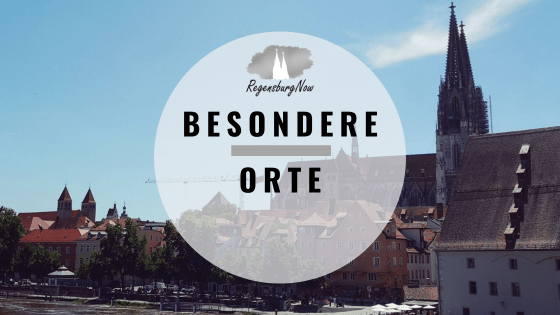
Magical places
SPECIAL PLACES AROUND REGENSBURG!
We have often written about micro-adventures and excursions here. But there are also very special places around Regensburg, places that enchant you.
The Walhalla or the Höllbachtal are such places, for example. But we’ll let you in on a few of our insider tips!
Six magical places near Regensburg:
1) The Raffa artificial forest garden near Burglengenfeld
The art forest garden was created in 2003 in the Raffa district between Burglengenfeld and Holzheim. Wood and metal artists from the local artist group “Dünger” have placed several art objects in the forest along a circular path around the so-called “Jägerhaus”.
The artist group consists of the object artist Florian Zeitler, the sculptor Stefan Preisl and the “Zeug” maker Andreas Hoffmann-Kuhnt. The group was founded in 2003 for the Bavaria-wide “Art in the Forest” campaign. The art forest garden is accessible all year round. (Autobahn A93 Regensburg – Weiden. Take the Ponholz exit in the direction of Burglengenfeld. Before entering the town, take the bypass towards Industriegebiet West. Take the Holzheim exit).
2) The Wolfgang oak
Near Thalmassing in the district of Neueglofsheim, you will find the imposing Wolfgangseiche, one of the oldest oaks in Germany. It is said to be over 1200 years old. The tree takes its name from St. Wolfgang, one of the first bishops of Regensburg, who is said to have preached under its crown 1,000 years ago.
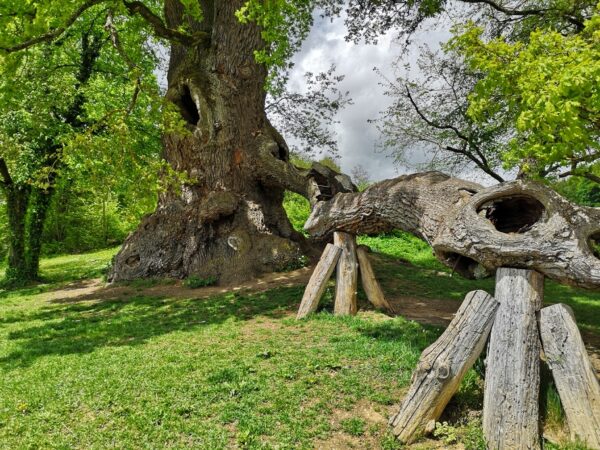
3) The Wackelstein in the Regental valley
Above Heilinghausen, behind Regenstauf, there is a wobbling stone on the so-called “Franzenshöhe”. This is an egg-shaped stone with a diameter of 3 meters. Before the Heilinghausen country inn, a narrow road leads up to the small village of “Gibacht”. A small 4.5 km circular trail to the Wackelstein begins there. Here is the detailed description: Wackelstein
There is a long chain on the stone – by the way, we didn’t manage to make it wobble.
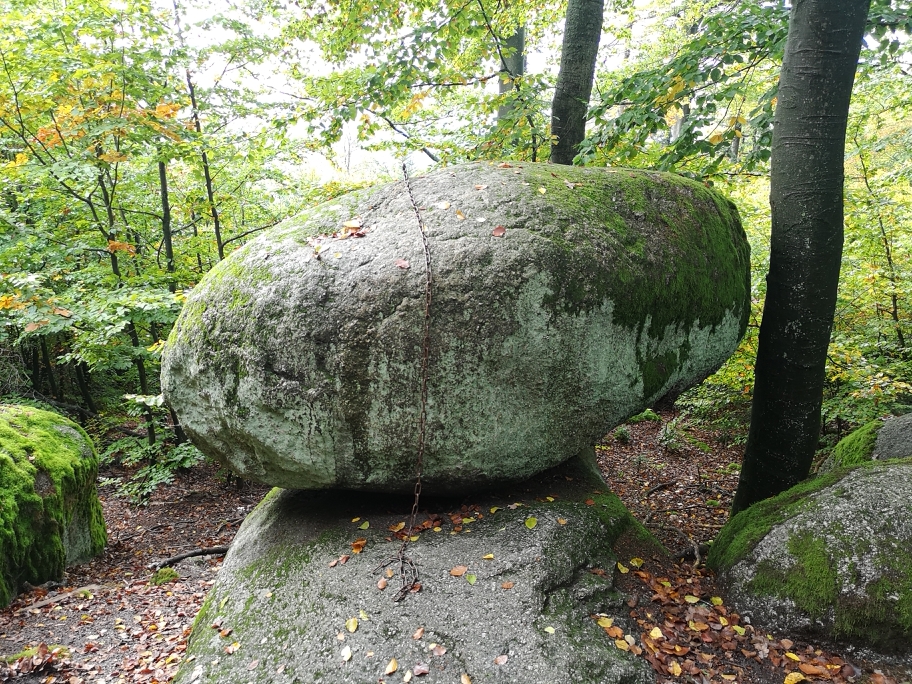
4) The Pfaffenstein
Near the Reichenbach monastery, approx. 25 km north-east of Regensburg, you will find the so-called Pfaffenstein on the Goldsteig trail. The cross on this spherical rock was erected in 1964, but the rock is said to have been used as a place of worship by the Celts.
There is a circular walk from Reichenbach Monastery via the Pfaffenstein to Walderbach Monastery. The Regental cycle path along the Regen takes you back to Reichenbach (approx. 10 km).
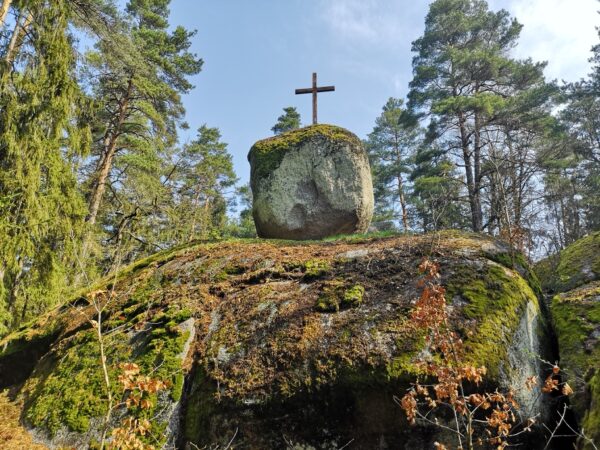
5) The Madonna at the Max-Schultze-Steig
Above the Schwalbennest, very close to the Max-Schultze-Steig, you will find a small Marian grotto with vineyard snails. An unusual place. We set off on the Max-Schultze-Steig trail from Prüfeningen Castle. At Erminoldsweg, simply follow the red triangle in the direction of Max-Schultze-Steig.
Max Schultze was an architect and senior architect at Thurn und Taxis. As an active conservationist, he acquired part of this area in 1906, which was threatened with destruction by limestone mining. He later donated the land to the city. The Max-Schultze-Steig is one of three nature reserves in Regensburg. The Sinzinger highway bridge cuts it in two.
Unfortunately, we couldn’t find out why the little Mariengrotte is there, but we did ask a church historian what the vineyard snails are all about. The assumption is that Christians have seen a connection to the Easter story since the Middle Ages: The vineyard snail closes its house with a lid in winter in order to crawl out again in spring. The rock tomb in which Christ lay was sealed with a stone. This is how the snail became a symbol of Christ’s resurrection for many people.
However, if anyone knows the exact history of this Marian grotto, we would be delighted to hear from you.

6) The Schulerloch stalactite cave
The cave is said to be no less than 1.5 million years old and with a length of 420 meters, the Schulerloch is one of the longest caves in the Lower Altmühl Valley. Neanderthals are even said to have lived here between 40,000 and 60,000 years ago, and finds have confirmed that people lived in the cave during the Neolithic and Bronze Age. Today, the cave provides shelter for bats in winter and can be visited on a guided tour from April to early November.
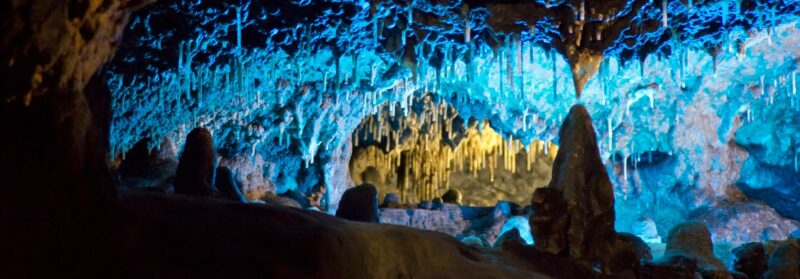
Have fun discovering! Your Annette
(unpaid advertising due to attribution. Unless otherwise stated, the photos are by RegensburgNow | Annette Ebmeier)


(unpaid advertising due to naming and shaming)
Our excursion tips on Facebook:
Do you already know our Facebook group “Excursion tips in and around Regensburg plus Upper Palatinate” with more than 22,000 members? Click here for the group.
RegensburgNow.de has over 40,000 readers per month and is a site of the RegensburgNow agency
If you are interested in advertising on RegensburgNow, please write to us at mail@regensburgnow.de
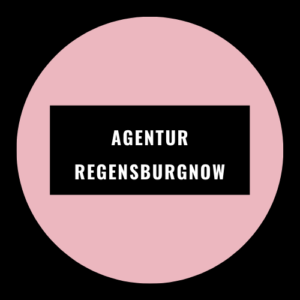
Don’t miss a thing! Subscribe to our newsletter:
Want more tips? Then please click here:


















